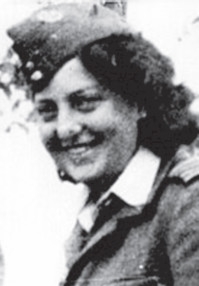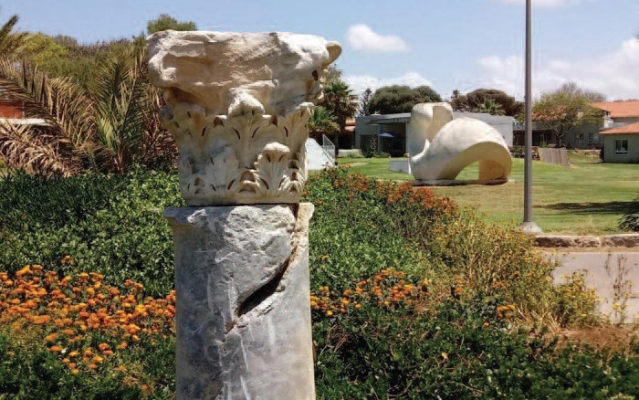Heroine’s Memory Honored
Kibbutz Sdot Yam is packed with physical beauty, incredible history and eye-watering vistas over both land and sea.
The kibbutz is literally a 'kissing cousin' to the impressive Caesarea National Park's southern border. The residents of the kibbutz nowadays live in spacious housing set in beautifully landscaped grounds, much of which are peppered with marble and stone artifacts created by the neighboring port city builders of yore, whether they be Persians, Romans, Byzantine, Muslim or Crusaders.
Walking around the lush Sdot Yam grounds, one is able to soak up its rich history with the help of a number of strategically placed distinctive blue and white information boards of the Society for Preservation of Israel's Heritage Sites (SPIHS). The constant background sound of gentle waves lapping against the nearby beach becomes almost hypnotic, and certainly enticing, whatever the time of year.
The plethora of sites, sights and sounds along this beautiful portion of the Israeli coastline and the azure Mediterranean waters gives one the impression that the kibbutz itself is an open, living museum – certainly attesting to the mutually successful partnership between the Zionist kibbutzniks and Mother Nature herself.
Sdot Yam was founded in 1936 by members of the Machanot Olim movement – it is said with robust encouragement by David Ben Gurion at the time. However, the first four years were spent at a different site closer to Haifa, the founders having moved in 1940 to the Caesarea site. Later on, in the 1970's, construction began of the Hadera Power Station, the four gigantic chimneys which somewhat blot the otherwise beautiful landscape in present times.
The fledgling kibbutz became home in the 1940s to the Second World War Hungarian born Israeli poetess and heroine Hannah Senesh. Trained by the British Army as a paratrooper, Senesh returned to her native Hungary on a mission to help the Allied efforts in Europe in establishing contact with partisan resistance fighters. Tragically, she was captured, tortured by the Gestapo and executed, aged just 23, by the Nazis in the place of her birth, Budapest.
Hannah Senesh's remains were returned to Israel in 1950 and laid to rest in the paratroopers' section of Mount Hertzl, Jerusalem. A small museum and study center honoring Senesh and another six Jews from British Mandatory Palestine who volunteered to train as paratroopers and failed to return from their missions behind enemy lines, has been created at Sdot Yam, a short distance from the beach and Mediterranean Sea she loved, and wrote about, so much
The museum is simply named The House of Hannah Senesh. A powerful statue-memorial to the fighter-poetess (one of whose prose Eli, Eli (My God, My God) was later put to music and today sung by Israelis and Jews in the Diaspora as one) stands in a small courtyard outside the museum, the words to another of her heart wrenching poems engraved around the base.
The eye-catching courtyard of a second on-site museum at Sdot Yam, the Caesarea Maritime Museum, is visible behind the impressive statue of Senesh. Its courtyard boasts a dozen or so ancient marble pillars, thick greenery growing - twisting and turning – around their solid marble trunks, gleaming whiteness in the sunshine.
Standing between the Senesh statue and memorial are the few meter-high marble artifacts, all of which adorned with glorious carvings, deepen the feeling of connection to the historical and cultural richness of this part of the coastal region. They focus in particular on the sacrifices made by so many who built cities and communities over the ages – and paid a heavy price defending what they had, or were dreaming of creating.
Sdot Yam, was also a base of Palyam, (the predecessors of the Israel Navy), engaged in smuggling clandestine immigrants into British Mandatory Palestine. Yossi Harel, the larger than life commander of the clandestine immigrant ship, Exodus and three other ships with a similar mission, is one of those buried at the Sdot Yam cemetery.
In present times over a thousand Israelis live at Sdot Yam which aptly translates to "Fields of the Sea".
Apart from extremely successful branches of agriculture, the kibbutz today has become one of the wealthiest of likewise communities in Israel through their 1980s-founded main industry, aptly named Caesarstone, which manufactures and markets quartz surfaces used for kitchen countertops, flooring, wall cladding and general interior design.










Comments